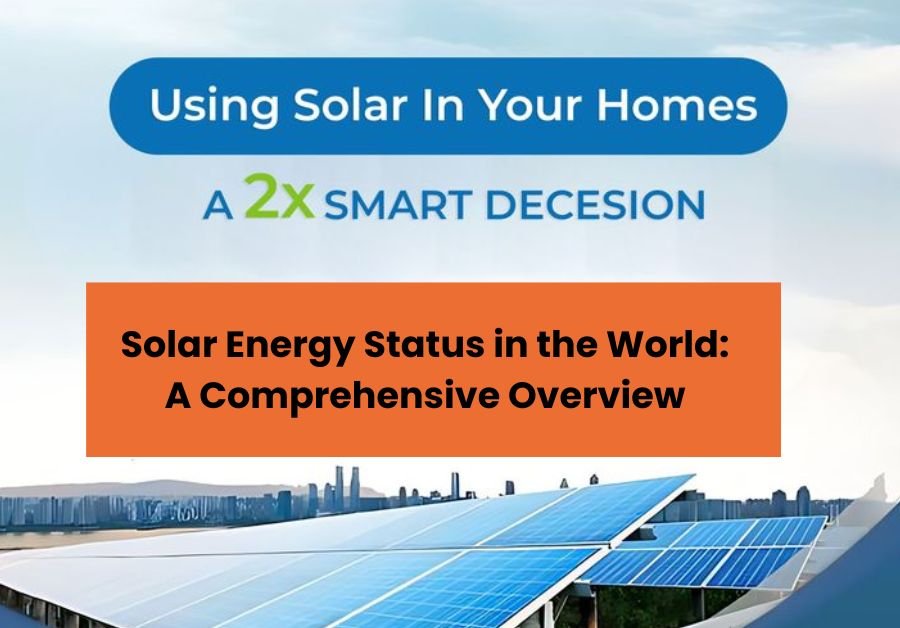In recent decades, the arena has witnessed a notable shift in its approach to power technology, with solar energy emerging as one of the most promising and transformative answers. As climate change, energy security, and sustainable improvement remain dominant international agendas, the call for smooth and renewable strength has in no way been stronger. Solar electricity, with its countless potential and swiftly declining costs, has grown to be a significant pillar in the transition toward a green economy. This comprehensive overview, Solar6, explores the modern-day fame of solar electricity around the world, highlighting the improvements, local tendencies, demanding situations, and destiny possibilities of this clean energy revolution.
From the periphery to the center of global power grids, solar power has emerged. Solar photovoltaic (PV) technology has emerged as the most cost-effective energy source in several sectors, according to the International Energy Agency (IEA). In 2024, on my own, worldwide sun PV potential grew by over 300 GW, accounting for more than 60% of global renewable strength additions. This boom has been pushed by favorable government guidelines, falling technology fees, growing environmental recognition, and growing demand. The worldwide installed capability of solar energy now exceeds 1,400 GW, a discern that would have been inconceivable only a decade in the past.
China leads the world in solar strength production and installation, each in scale and pace. With greater than 600 GW of setup ability, China by myself bills for over 40% of the global overall. The Chinese authorities have heavily invested in solar production, allowing it to dominate the global delivery chain for panels, inverters, and batteries. Large-scale solar farms, just like the Tengger Desert Solar Park and the Kubuqi Desert project, mirror the United States of America’s dedication to renewable energy. In addition to utility-scale initiatives, China is swiftly expanding distributed solar on rooftops and industrial zones.
The United States follows intently, with over one hundred seventy GW of installed solar capacity. Federal tax incentives, state-level renewable portfolio standards, and declining installation charges have all contributed to the U.S.’s solar increase. States like California, Texas, and Florida are leading the rate, with utility-scale solar parks, business rooftops, and home installations developing rapidly. The Inflation Reduction Act of 2022 provided an extended coverage framework for smooth energy investments, similarly accelerating deployment and local manufacturing of solar components.
Europe has also seen steady growth in solar electricity, pushed by formidable climate targets and power diversification dreams. Germany, lengthy taken into consideration a pioneer in solar adoption, has over eighty GW of solar capacity. Other countries like Spain, Italy, the Netherlands, and France have made widespread strides in each application-scale and disbursed era. The European Union’s REPowerEU plan, advanced in response to the power crisis exacerbated with the aid of geopolitical tensions, targets to double solar capacity by 2030. Rooftop solar mandates for brand new homes and inexperienced financing instruments are driving adoption across member states.
Emerging economies are also making their mark. India has turned out to be a solar powerhouse with over eighty GW of hooked-up potential and ambitious objectives to attain 280 GW by 2030. The authorities’ push via tasks like the National Solar Mission, production-related incentives (PLIs), and large-scale tasks, along with the Rewa and Bhadla Solar Parks, has placed India as a worldwide leader in cost-effective solar deployment. Similarly, nations in Latin America like Brazil, Chile, and Mexico are leveraging abundant sunlight and favorable policies to boost their solar sectors.
In Africa, solar electricity is gaining traction as a strategy to address chronic power shortages and electricity poverty. Countries that include South Africa, Egypt, Morocco, and Kenya are investing in utility-scale solar projects, while decentralized solutions like solar domestic systems and mini-grids are improving power get admission to in off-grid rural areas. International collaborations and improved finance play an important role in facilitating solar development on the continent, even though demanding situations related to financing and grid infrastructure stay.
The Middle East is another region with tremendous solar potential and rising investments. The United Arab Emirates and Saudi Arabia are making strategic shifts from fossil fuels to renewable energy. Among the biggest in the world are the Al Dhafra Solar Project in Abu Dhabi and the Mohammed bin Rashid Al Maktoum Solar Park in Dubai. These initiatives reflect a broader regional trend of aligning energy strategies with long-term sustainability and economic diversification goals.
Technological innovation continues to shape the global solar panorama. Advancements in panel efficiency, which include bifacial and perovskite solar cells, have drastically stepped forward electricity yields. Floating solar structures, solar home windows, and building-integrated photovoltaics are pushing the limits of where and how solar may be used. Furthermore, the mixing of solar with battery storage, clever grids, and electric automobiles is improving system reliability and growing more flexible energy ecosystems.
Despite the development, the solar enterprise faces several demanding situations. Grid integration remains a significant problem, particularly in areas with susceptible transmission infrastructure or variable energy demand. Energy garage solutions, while improving, are nevertheless pricey at scale. Policy uncertainty and exchange disputes can disrupt supply chains and postpone initiatives. Additionally, land use issues and community competition now and again avert massive-scale deployments. Addressing those demanding situations calls for coordinated policy frameworks, public-nonpublic partnerships, and sustained research and improvement efforts.
In conclusion, solar energy has become a key player in the global transition to sustainable power. Its rapid growth across continents, technological advancements, and falling costs are reshaping the global energy landscape. While challenges remain, the momentum behind solar is unstoppable. With the right policies, investments, and international cooperation, solar power—led by innovative providers like Solar6—can illuminate a cleaner, more resilient, and more equitable future for all.

